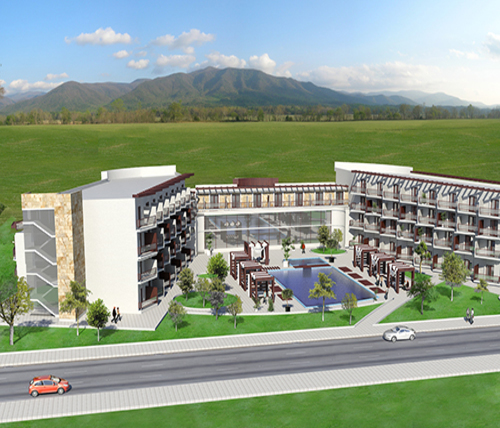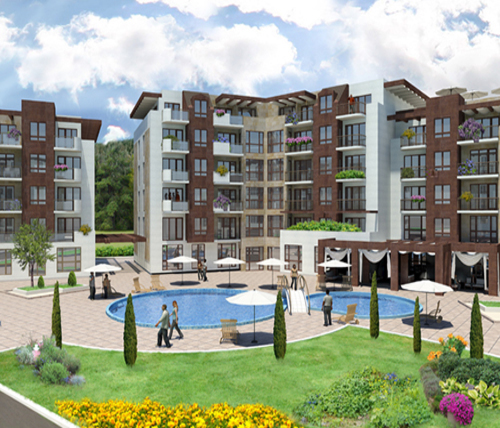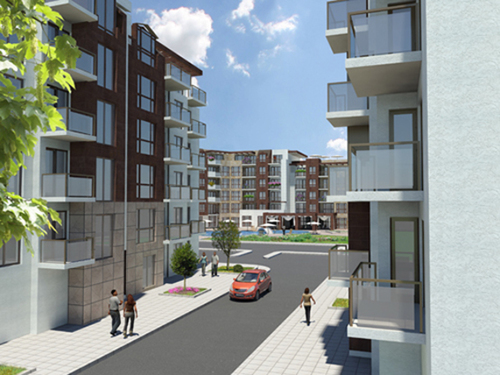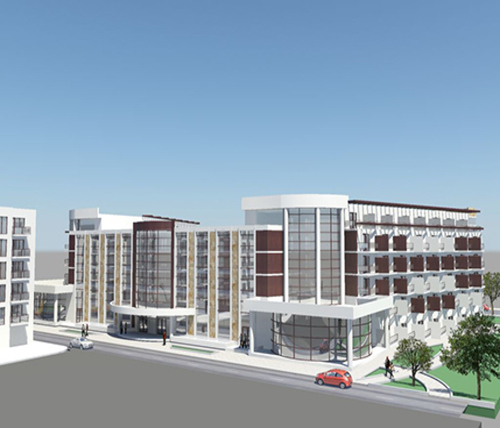JIVA VODA
JIVA VODA Project, presented by the ART BUILD-UP Ltd. company, Sofia, Bulgaria16.05.2014
ART BUILD-UP Ltd. presents JIVA VODA project,which is to be implemented in the town of Hisarya, over a land of 18 030 km2.A preliminary project has been created, that could be adapted and furtherdeveloped into different scenarios: a closed type residential area for elderlypeople; bath treatment sanatorium; recreational centre/for athletes; children/;center for prophylactic care, etc. The project includes an existing mineralwater-main pipe which is 1 km long and a concession for water extraction for10+ years from a mineral spring: Probing No. 3, with water flow of 1 L/sec.

As far as abundance and diversity of hydro-thermal water andbio-climatic treatment are concerned, Bulgaria is among the first countries in Europe. The climateand biological related possibilities have been used since time immemorial.
After the conquest of the province of Thrace by the Romans, they createdlarge settlements around the mineral springs, one of which is Diocletianopolis– today called Hisarya. The first evidence of Hisarya date back to 3rd-4thcentury BC.
Considering its time, the architecture of the town was one of the mostbeautiful in Europe. Its fortress wall reached a height of 11 meters, and hadfour gates. The fortress was reinforced by 44 towers. Imperial palaces, marblebathс, many statues of Roman gods and rare types of vegetation were locatedin the ancient town.

In the 17th century, during the Ottoman invasion, the town wasappraised and preserved as a major rehabilitation center. At that point itreceived the name ‘Hisarya’.
Today in Hisarya everyone can see one of the few preserved ancient bathsof the Balkan Peninsula, the unique Amphitheatre and the extremely rare tenEarly Christian basilicas. The town was one of the main Christian centers.
Hisarya is an attractive archaeological destination, famous for one ofthe most impressive and best preserved Roman ruins in Bulgaria – FortressAugusta – an archaeological reserve. The originallity of Diocletianopolis architectureranks among the first in Europe.
Hisarya is located in the Upper Thracian Lowlands, at 364 meters abovesea level and spread across on the southern slopes of Sredna Gora. The climate is transitional-continental,with warm and mild winters.

The town is located 165 km via highway from the airport of thecapital Sofia and 42 km away from the Plovdiv airport.
The combination of unique climate, wonderful parks and gardens, and an abundance of mineral springs is favorable to treatment, recreationand relaxation throughout the year.
Hisarya has 22 mineral springs, that is why they call it "The MineralSprings Town". These springs have gotproven medicinal properties and are characterized by different physical chemicalcharacteristics and temperature. The water temperature is from 37 °C to 52 °C, lowmineralization water, suitable both for drinking and for treatment.
This is the very place of the first organized bath and spa treatment in Bulgaria.
In recent years, visitors in Hisaryacan see the rebirth of the traditions ofRoman baths. Bath and spa treatmentfacilities, as well the physical therapy facilities function throughout theyear, together with public baths and modern hotels and SPA/wellness centersfor complete relaxation and a wide range of health care tourism.
Hisarya is a renowned health resort. It meets therequirements of the European health care systems for the implementation ofprojects in the field of children's treatment centers; spa sanatoriums or enclosed-typehomes for the elderly; rehabilitation and recreational centers.
Landmarks:
• The springs with mineral water- Momina Banya - 47 °C, Momina Salza - 42 °C, Stublata - 31 °C (the coldestspring) Toplitsa - 51 °C (the hottest spring) Bistrica - 45 °C, Svezhest - 41 °C;
• The Colonade - built in1960, it is an exact replica of a Roman colonade. Powered by mineral water from the Momina salzaspring. The eight ancient deities of helth – Yazo, Panacea, Telesphorus,Asclepius, Hygieia, Epione, Mohayos and Podalerios – are depicted on the arch. Thebasic crystals of the mineral water are symbolically painted on the arch of thecolonade;
• The massive Roman fortress wall– Augusta – is one of the best preserved fortress walls in Bulgaria. Its lengthreaches 2315 m. The fortress wall has four gates, of which the most famous andthe main one is the south gate, called "Kamilite";
• The Roman Thermy – they are among the few preservedthermy on the Balkan Peninsula, where people performed procedures and treatmentwith mineral water. Preserved almost to the roof, they impress with theiroriginality. From the inside, the rooms were covered with white marble. Themineral water was used for heating;
• Amphitheatre - it is thesecond largest amphitheatre found in Bulgaria so far. It is of the circus type, where sportscompetitions and animal fights were held. It was built in the first half of the4th century and followed the canons of the new Christian ideologynot to shed blood. Perfectly preserved arethe arena and amphitheatre service facilities;
• The ten Early Christian basilicas- built during 4th-6th century; they reflect thepeculiarities in the development of the Early Christian architecture;
• Roman tomb,which impresses with its long corridor, burial chamber and its colorful floormosaic work. It is located at about 300meters south of the fortified town. It is preserved in the original and isavailable for visits;
• Archaeological Museum - hasa rich collection of samples from prehistoric times; Thracian, Roman andByzantine utensils; columns, marble slabs, statues, along with gold, silver andbronze coins and objects;
• The museum collection of kidneystones - contains about 10,000 concrements that were excreted during andafter medical treatment in Hisarya. Few of them were taken after surgery. Thecollection is a testament to the healing effect of the Hisarya mineralwater. It is located in the bathtreatment facility "Momina banya".
